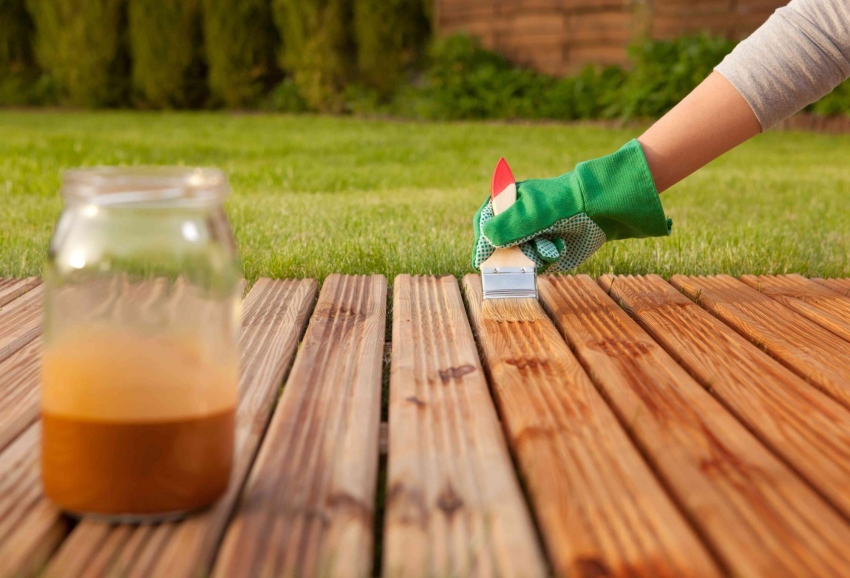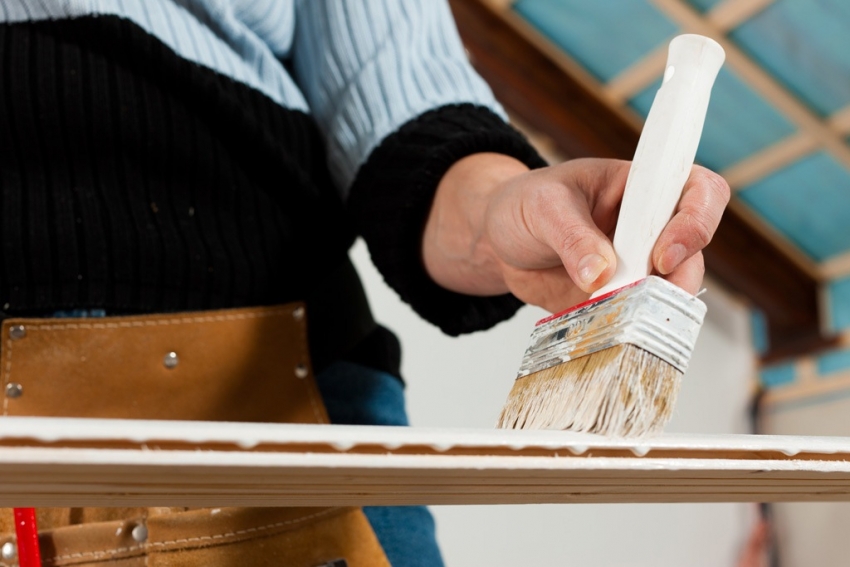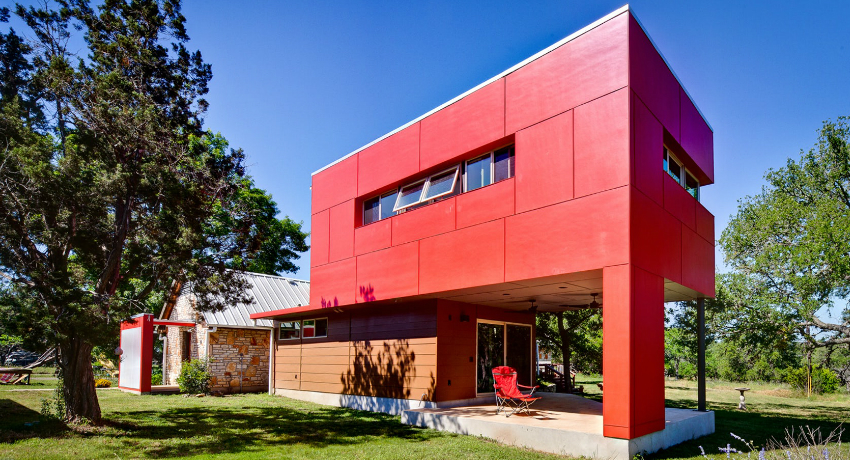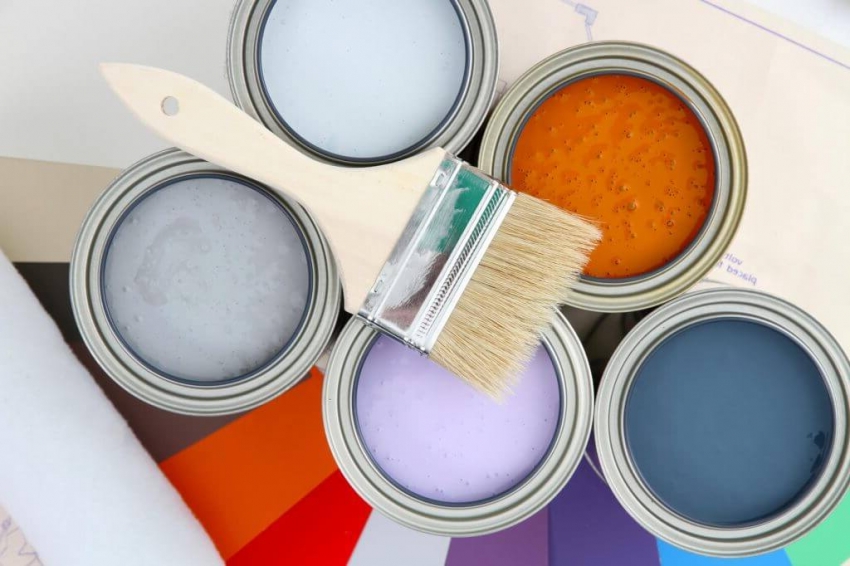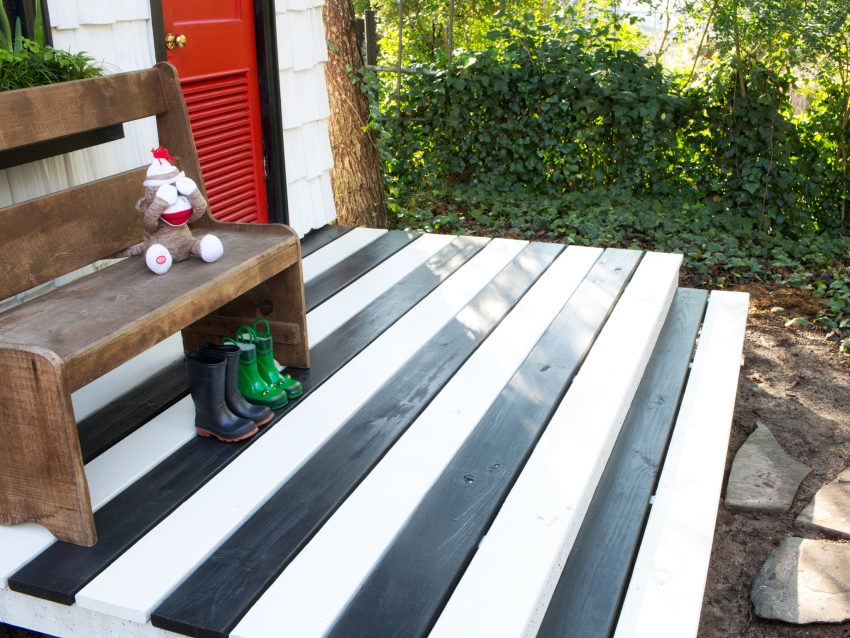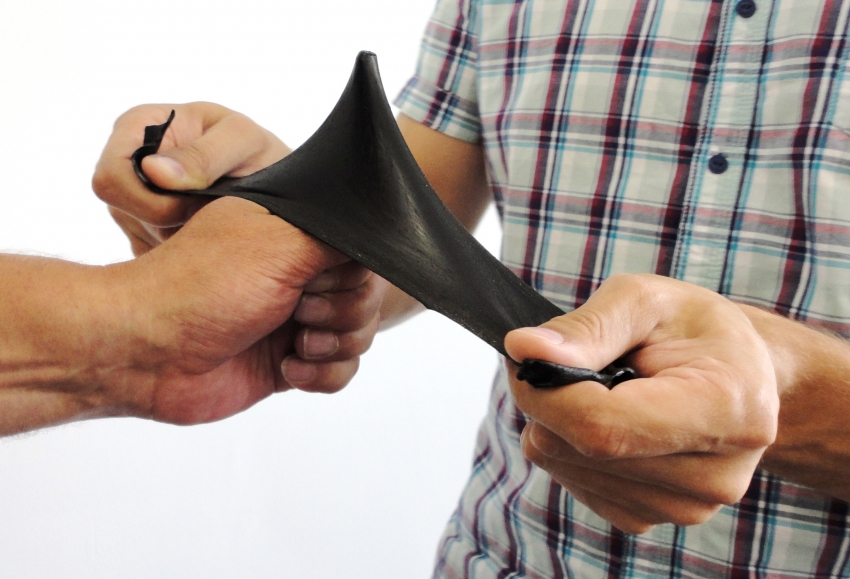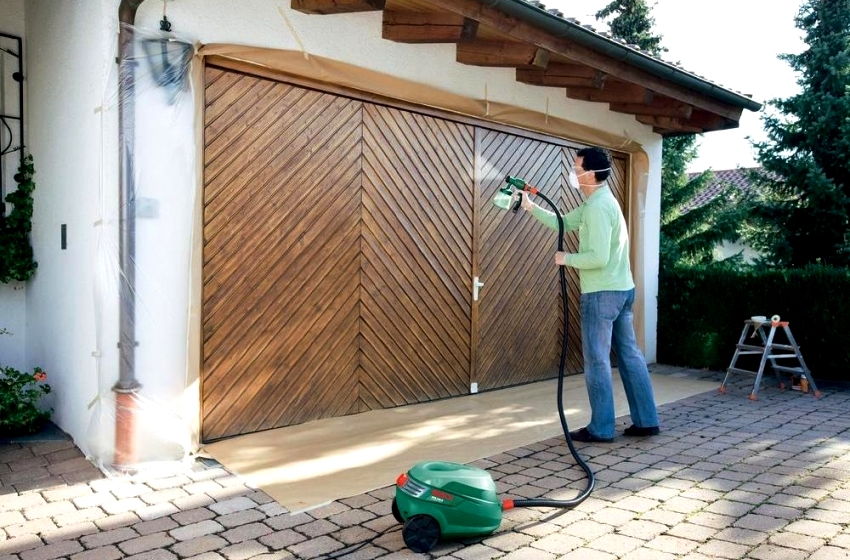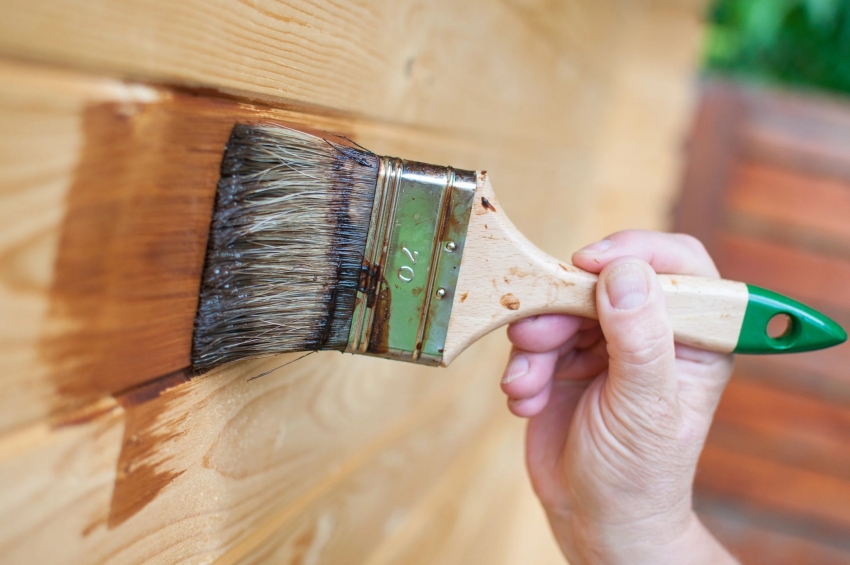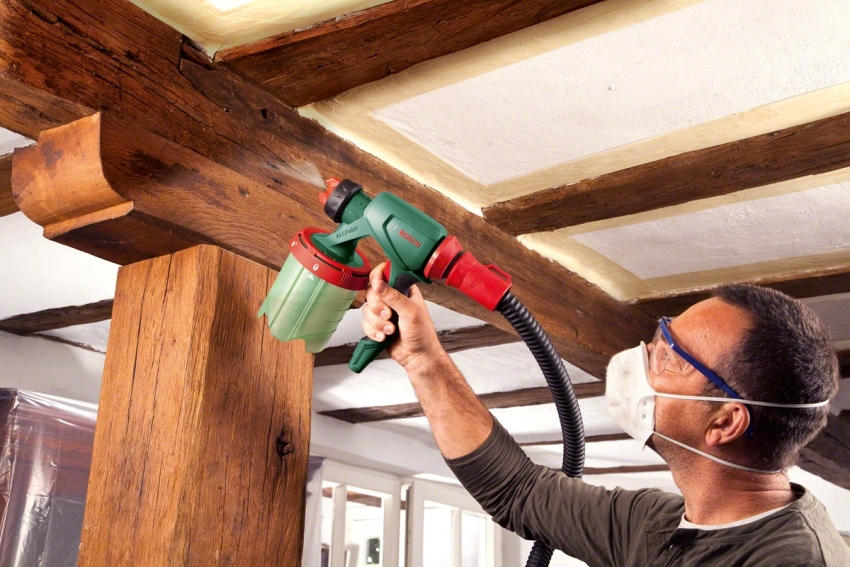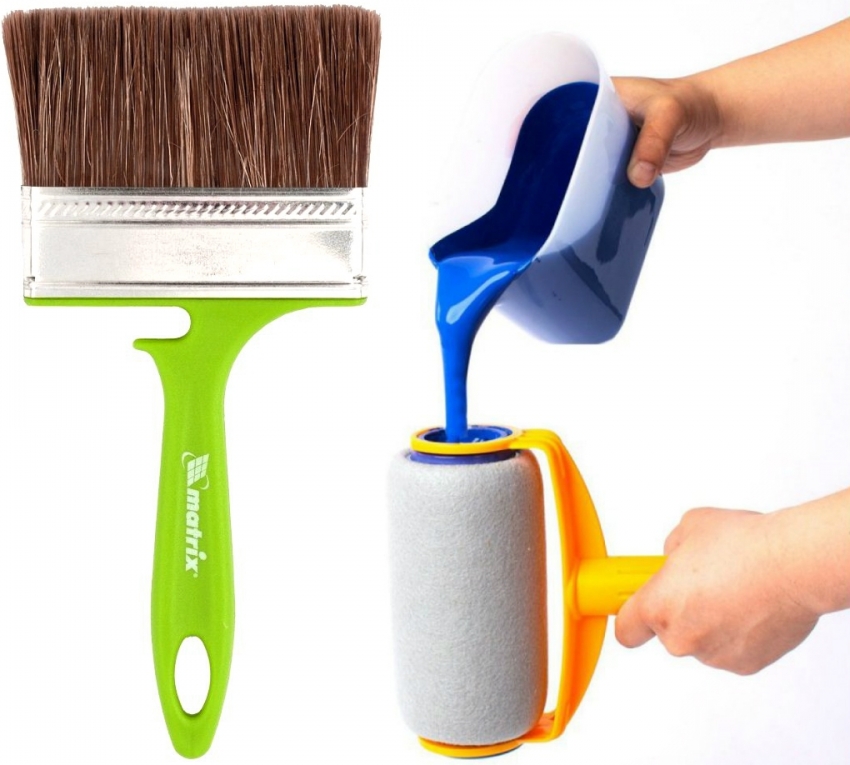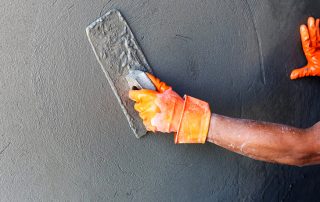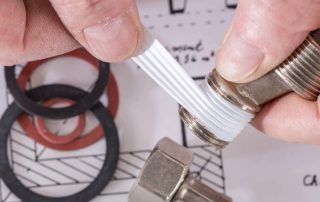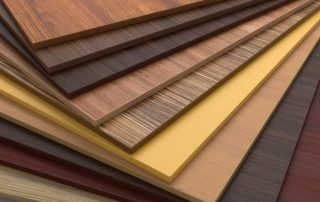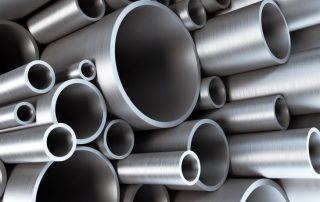This article will help you determine which paint for wood for outdoor use is best, taking into account the main quality criteria. Consider in detail the comparative characteristics of oil, acrylic and alkyd, rubber compounds used for wood processing: their advantages and disadvantages, operational and technical parameters, properties, rating of the best dyes from popular brands, as well as average prices.
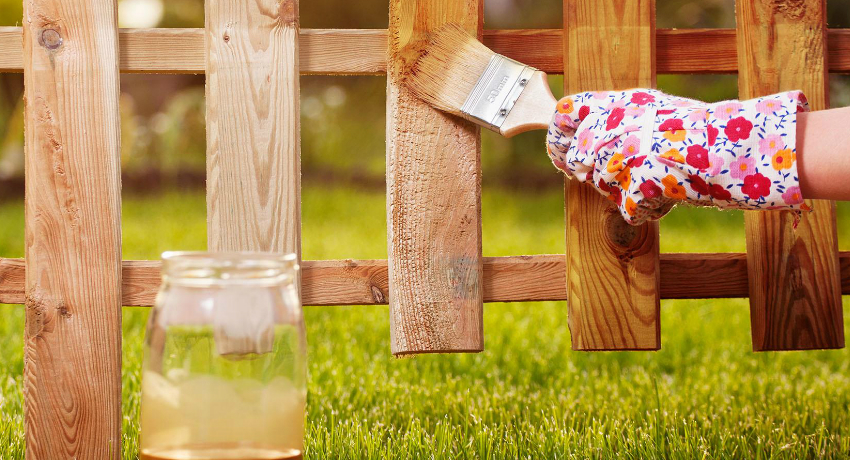
Wood is an environmentally friendly material with an excellent appearance, but requires the use of special protective equipment
Content [Hide]
- 1 Which wood paint for outdoor use is better: coating as protection
- 2 Features of oil paints for outdoor woodwork
- 3 Features of alkyd wood paints for outdoor use
- 4 Features of acrylic wood paints for outdoor use
- 5 Features of rubber wood paint for outdoor use
- 6 The main types of wear-resistant wood paints for outdoor use
- 7 Rating of paints on wood for outdoor work: descriptions, reviews, rates
- 7.1 Finnish wood paints for outdoor use Tikkurila
- 7.2 Popular Tikkurila wood paint series for outdoor decoration
- 7.3 Characteristics and prices of Tikkurila paints for outdoor woodwork, reviews
- 7.4 Popular series of paints Belinka for wood for outdoor use
- 7.5 Belinka compositions: characteristics and prices of wood paints for outdoor use, reviews
- 7.6 Popular series of paints Neomid for wood for outdoor use
- 7.7 Characteristics and prices of Neomid coatings, reviews
- 7.8 Description of compositions from the Teknos wood paints catalog
- 7.9 Characteristics and prices of paints for Teknos wood, reviews
- 7.10 Popular series of Zobel wood stains for outdoor use
- 7.11 Characteristics and pricing of popular Zobel formulations
- 7.12 Features of Pinotex wood paints for outdoor use
- 7.13 Characteristics of wood paints for outdoor use Drevoplast
- 7.14 Overview of Dufa paints for outdoor woodwork
- 8 Choosing a paint color for wood: colors and recommendations
Which wood paint for outdoor use is better: coating as protection
Wood is considered a traditional building material for building houses. Due to its special properties, this type of raw material provides the building with beauty, environmental friendliness, warmth and comfort.But like any other material of natural origin, wood needs additional protection.
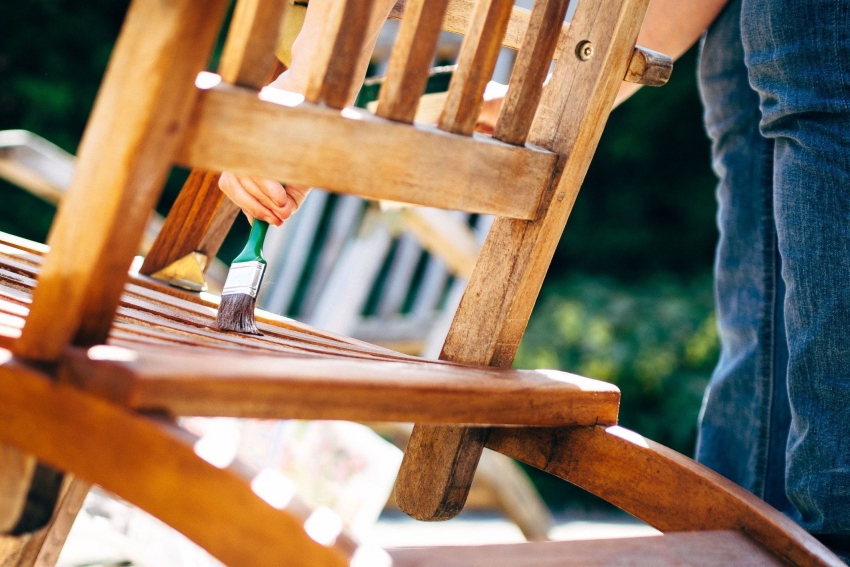
Using special means for wood protection can significantly extend the operational life of objects and structures
A high-quality protective coating performs several functions at once:
- allows you to extend the life of both the material itself and the entire structure;
- excludes the appearance of cracks and deformations;
- allows you to mask the loss of the natural color of wood;
- makes it possible to give the building the desired shade;
- allows you to diversify the design;
- protects the material from the negative effects of external factors;
- prevents the growth of mold, fungal spores and microorganisms that destroy wood.
Therefore, the question of choosing the best wood paint for outdoor use is extremely important. For the exterior decoration of the building, compounds are used on different bases. Acrylic, oil, rubber and alkyd enamels are most often used. Each of the listed types of coating has its own useful properties and disadvantages. A review and comparison of characteristics will allow you to determine which is the best option for certain purposes.

Modern compositions allow not only to protect the structure from decay, but also to preserve the visible texture and pattern of the natural cut of the tree
How to choose the best paint for outdoor woodwork
Under the influence of atmospheric phenomena, the external attractiveness of wood is lost, cracks appear and moss, fungus and mold begin to develop on the surface. If you choose the right paint for wood for outdoor decoration, you can not only prevent the destruction and damage of the material, but also mask the consequences that have resulted from this negative impact.
Helpful advice! For additional protection, experts recommend treating the wooden surface with an antiseptic before painting.
A high-quality paint and varnish coating that provides reliable protection must have the following properties:
- repels moisture, which prevents liquid from entering deep layers of material;
- protection of the surface from microorganisms that settle in the structure of the tree;
- scaring away insects that can harm wood;
- prevention of overdrying under the influence of direct sunlight with the subsequent appearance of cracks;
- abrasion resistance;
- preservation of decorative characteristics.

One of the main properties of a high-quality wood dye is a high level of protection of the structure from moisture and microorganisms.
Antiseptic as a base for facade paint for exterior woodwork
Antiseptic compositions are characterized by high penetrating power. Sometimes the agent is able to penetrate to a depth of 0.7 cm. Due to this, elements made of wood receive a reliable level of protection against putrefactive and mold lesions, as well as natural factors.
Antiseptics are of two types:
- Glazing.
- Covering.
In the first case, the coating has a transparent structure, due to which the natural colors of the wood are emphasized, as well as its natural pattern. The covering antiseptic has another name - opaque. This type of coating completely hides the wood grain, but retains its texture. If it is difficult to decide what paint to paint a tree with so as not to spoil its appearance, you can limit yourself to the use of a glazing antiseptic that will preserve the natural beauty of the material.
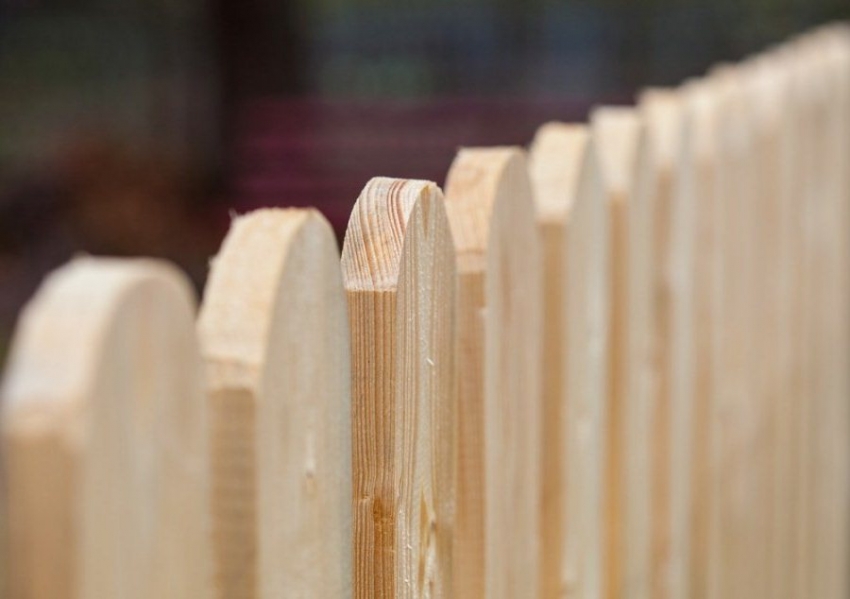
Unprotected wood is not able to withstand negative weather conditions and parasites, so the service life will be short
The main functions of an antiseptic:
- imparting antiseptic properties to the surface;
- protection of the material from the influence of atmospheric phenomena (wind, precipitation, UV);
- prevention of the reproduction of rot and mold;
- surface decoration (coating composition);
- creation of a transparent coating (glazing composition).
Features of oil paints for outdoor woodwork
Manufacturers use coloring pigments and binders as the main components of oil dyes. Drying oil is the most common component used for binder. The role of a coloring pigment is most often a mineral powder in the form of a fine dispersion. Its particles cannot dissolve in the binder. This effect is achieved due to the fact that the mineral powder is much heavier than the main component.
Before you buy oil paint for outdoor use, you should pay attention to the following nuances:
- the volume of film-forming substances;
- the presence of volatile components;
- granularity;
- dye consumption;
- the degree of coating hardness;
- hydrophobicity.
Helpful advice! Particles of mineral powder often accumulate at the bottom of the can in the form of a dense sediment. Therefore, it is recommended to thoroughly stir the contents of the container before using the dye. This requirement also applies to other formulations.
Criteria for choosing a quality oil paint for outdoor use
In addition to binders and pigments, the dye contains other components, the amount of which should be strictly standardized. For example, the proportion of film-forming substances must exceed 25% of the total volume of the mixture. The higher this percentage, the longer the coating will last. However, the large amount of film-forming components shortens the time during which the solution retains its usefulness after the container is opened. In other words, an open can of dye cannot be stored for a long time.
Before you buy an oil-based paint for wood, you need to pay attention to the presence of volatile components in the composition. The minimum permissible content of these substances in the solution is 10% of the total amount of the mixture. These components are toxic and hazardous to human health. Evaporation of volatile substances begins at a temperature of + 20 ° C. For this reason, it is necessary to use respiratory protection or paint the surface at lower temperatures.
With a grain size of less than 90 microns, a smooth coating is formed on the treated surface. If you want to get a protective layer with a pronounced roughness, you should buy wood paint for outdoor use with larger grain.
The paint consumption is influenced by properties such as flowability, setting time and viscosity of the composition, as well as the porosity of the material. A quality mixture has a viscosity index in the range of 65-140 units. At the same time, the drying time should not exceed 48 hours. The durability of the coating depends on the degree of hardness of film formation. The higher the number, the better. The level of hydrophobicity of dyes for external use should be 100%. More gentle requirements are put forward for compositions for internal work.
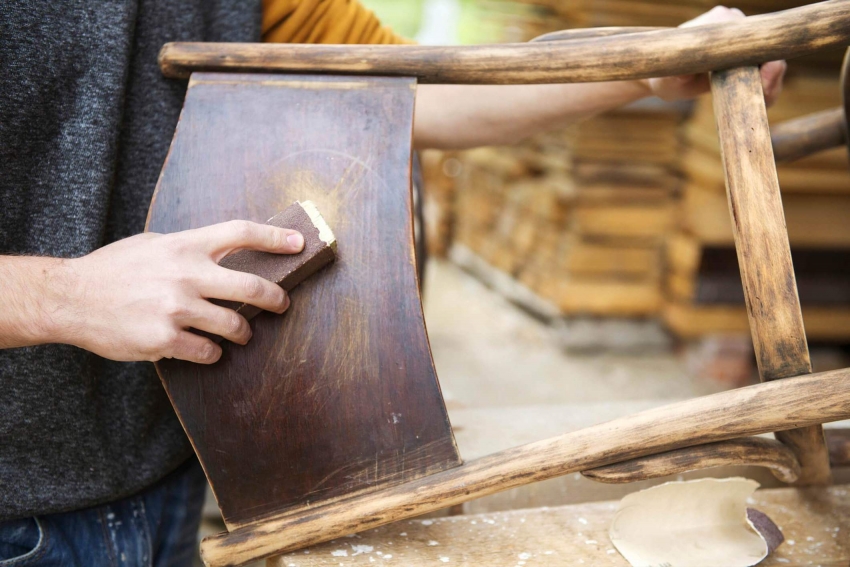
Before coating with oil paint, the product must be thoroughly cleaned to obtain the best painting result.
Properties and characteristics of oil paints for wood
Oil dyes are based on linseed oil. Moreover, this component can be of both natural and artificial origin. The structure of the composition allows you to give the mixture almost any color.
Important! Oil coatings are not compatible with acrylate wood paints for outdoor use and other types of compounds. Therefore, to restore the paint layer on a wooden building, you will need to use the same type of finish or completely remove the old coating.
Properties of oil-based dyes:
- a high level of adhesion to a wooden surface pretreated with drying oil;
- it takes a long time for the coating to dry completely (from 24 to 48 hours), therefore, in order to prevent dust from sticking to a freshly painted surface, finishing work should be carried out when there is no wind outside;
- a low degree of UV resistance, as a result of which the coating can quickly lose its shine and color saturation, therefore it is recommended to choose a white paint for exterior woodwork or an oil composition of a light shade;
- the maximum service life of the coating is 6-7 years or less, subject to the influence of a large number of adverse factors.
The approximate consumption of the dye is 100-150 g / m².
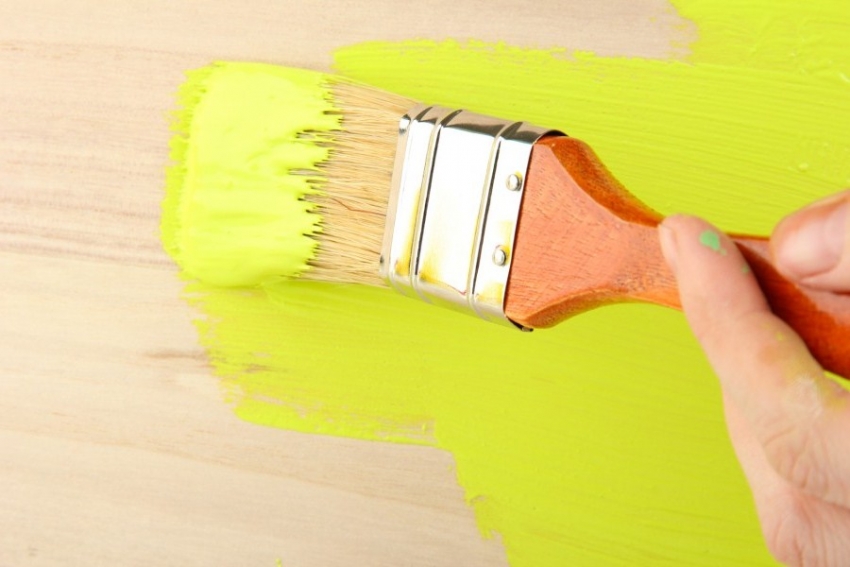
Oil-based paints are not UV-resistant, so bright colors should be used for surfaces that are not in direct sunlight
Features of alkyd wood paints for outdoor use
The main component of these dyes is alkyd varnish. It is pentaphthalic and glyphthalic. The first option is used for the manufacture of household compounds. This varnish is a thick resin that can be diluted with a solvent. This mixture contains oils, rosin and glycerin as additional substances.
Particles crushed to the state of flour can be present as a filler:
- sand;
- marble chips;
- granite chips.
Coatings formed by alkyd paints are durable and flexible. The painted surface dries quickly. Most often this requires 6 to 12 hours. The drying time is influenced by the ambient temperature and the degree of humidity. During operation, the paint and varnish layer does not undergo rapid fading and does not shrink.
Note! Manufacturers of alkyd paints leave markings on the cans that indicate the properties of the composition and its purpose. For example, the PF-115 marking indicates that pentaphthalic varnish was used in the manufacture. The “1” at the beginning of the numerical value indicates outdoor use, and the number “15” is the dye code in the catalog. Mixture PF-115 is intended for painting metal and wood surfaces. It forms a glossy layer.
Alkyd dyes marking:
| First number | Dye properties |
| 0 | primer enamel |
| 2 | interior finishing works in heated and non-heated premises |
| 3 | creating a temporary seal on the equipment (conservation paint) |
| 4 | high level of water resistance and hydrophobic properties |
| 5 | special-purpose paints (formulations with luminescence, coatings for scaring small rodents) |
| 6 | resistance to gasoline and oils |
| 7 | resistance to aggressive chemical environments |
| 8 | heat resistance |
| 9 | electrical conductivity or electrical insulation |
Advantages and disadvantages of alkyd wood paints
Consider the advantages of alkyd-based formulations:
- low price;
- resistance to negative atmospheric factors;
- wide temperature range (from -50 to + 60 ° С);
- a wide range of coatings with different effects (semi-matt, matt, glossy).
Related article:
Facade paint for outdoor use: the price and characteristics of the compositions
Popular manufacturers. Technical characteristics and features of the compositions. Types of dyes for the exterior of the building.
If there is a choice of what paint to paint a wooden fence, it is better to give preference to a glossy composition. This type of coating is ideal for outdoor applications. Alkyd dyes that form a glossy finish on the surface can last 20% longer than other options in this category. Dye consumption is about 150 g / m².
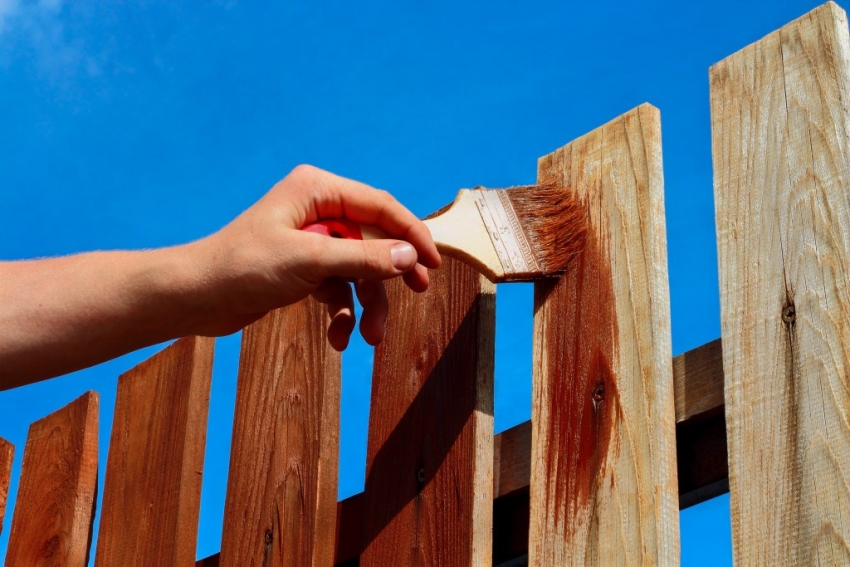
Before deciding what paint to paint the fence with, you should familiarize yourself with all the properties of the composition
Disadvantages of alkyd dyes:
- the compositions have a high flammability index, therefore, for fire safety purposes, it is not recommended to process buildings with them, it is better to limit yourself to a fence, a gazebo, a bench;
- low degree of susceptibility to the effects of alkaline compounds contained in sediments;
- during operation, the fragility of the coating increases, shine is lost, cracks and a yellow tint appear;
- mixtures cannot be classified as environmentally friendly materials;
- the unpleasant odor of the dye lasts until the coating is fully dry;
- the maximum service life of the coating under gentle conditions is 5-6 years.
There are many disadvantages of both oil and alkyd compositions, so most consumers prefer to buy acrylic paints for wood in order to get a better and more environmentally friendly coating.
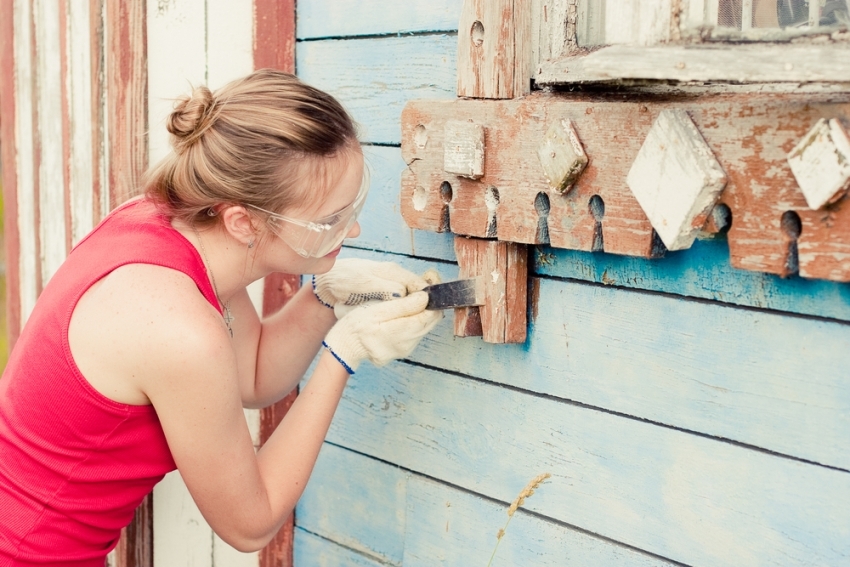
Alkyd paint is difficult to clean from the surface, so for painting a wooden house it is better to choose acrylic compounds for outdoor use.
Features of acrylic wood paints for outdoor use
Acrylic-based dyes are water-soluble compounds of synthetic origin. These include quality polymer type acrylic emulsions. These elements are the link between other paint components - water and pigments. In addition, manufacturers add other ingredients designed to improve the stability of the emulsion's performance during long-term storage.
Important! It is strictly forbidden to store acrylic water-based paint for wood in low temperatures.
When the dye hardens, the thinnest film layer with high adhesive properties forms on the surface. Thanks to this elastic coating, the painted surface is reliably protected from aggressive external influences. The decorative characteristics of the compositions are due to the presence of coloring pigments.
Is it possible to paint a tree outdoors with acrylic paint
Taking into account the artificial origin of the dye, the question of the compatibility of this finishing material with natural wood products used in outdoor conditions becomes relevant. A number of advantages inherent in acrylic-based formulations have made them the best option for these purposes. Moreover, these mixtures are considered not only as the best paints for the walls of the facade, but also for other objects made of wood.
Such paints have a high degree of resistance to atmospheric agents, including UV rays. Therefore, the coating will retain its original color for a long time. The film coating is characterized by hydrophobic properties and high vapor permeability. As a result, the paint repels water well, but at the same time does not block the access of air to the wood.
Wood under the influence of moisture and the sun undergoes deformational changes. Due to its elasticity, the coating retains its integrity. When the building shrinks, when exposed to high humidity or temperature changes, the paint does not crack. The covering ability is also high. Two-layer painting gives an even coating, even when applied on a dark substrate.
Water-based acrylic paints for wood are environmentally friendly. They do not have unpleasant odors, so they go well with wood. Dilution of the composition to the desired consistency does not cause any particular difficulties, as does the tinting of the base mixture. However, the procedure for adding pigments is best left to professionals who use computer technology for this purpose.The paint dries quickly, so finishing the facade does not take much time. The result is a durable finish that does not need to be tinted frequently.
Disadvantages of acrylic paints for outdoor woodwork
There are practically no significant drawbacks to acrylic-based compositions. There are only a number of restrictions that must be taken into account during staining.
Helpful advice!The choice of color affects the level of insolation. White wood paint is recommended for hot regions as it reflects the sun's rays. For these purposes, other light colors are also suitable. For colder climates, it is best to choose dark finishes that absorb light.
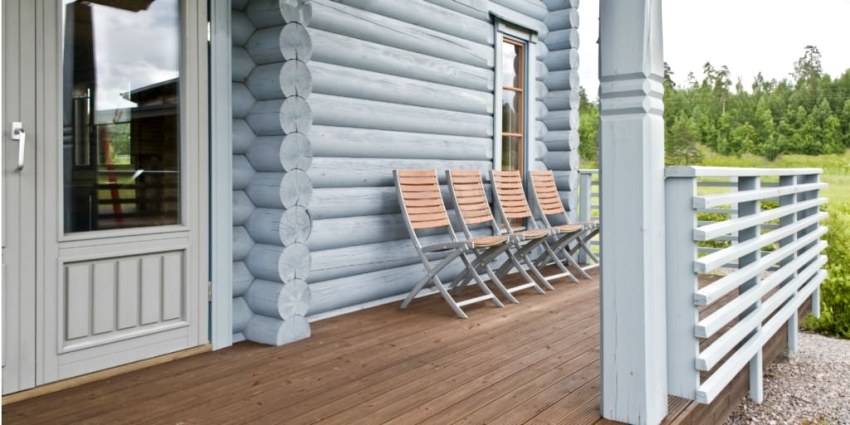
Approximate consumption consumption acrylic paint for wood can be read on the packaging or in the manufacturer's catalogs
In order to perform high-quality staining, it is recommended to first calculate the required amount of paint. Most often, manufacturers indicate the capacity of the approximate paint consumption, which is measured in liters or grams per m². This indicator for acrylic paints has a wide range of variations - from 130 to 200 g / m².
Each subsequent layer is applied only after the previous one has completely dried. Otherwise, the coating will be thick, sloppy and may float. Many little-known manufacturers are trying to attract buyers with a low price of acrylic paint for wood. However, it is better to give preference to reliable and proven brands. Often, poor-quality compounds change color after drying or quickly lose their quality.
How to calculate acrylic paint consumption for exterior woodwork
Dye consumption depends on the porosity of the wood to be colored. For example, sawn wood has a high absorbency, so the consumption can be high during the initial application of the acrylic compound. Coloration of planed wood is accompanied by a lower consumption. If the facade of the building already has an old paintwork, this figure will decrease significantly.
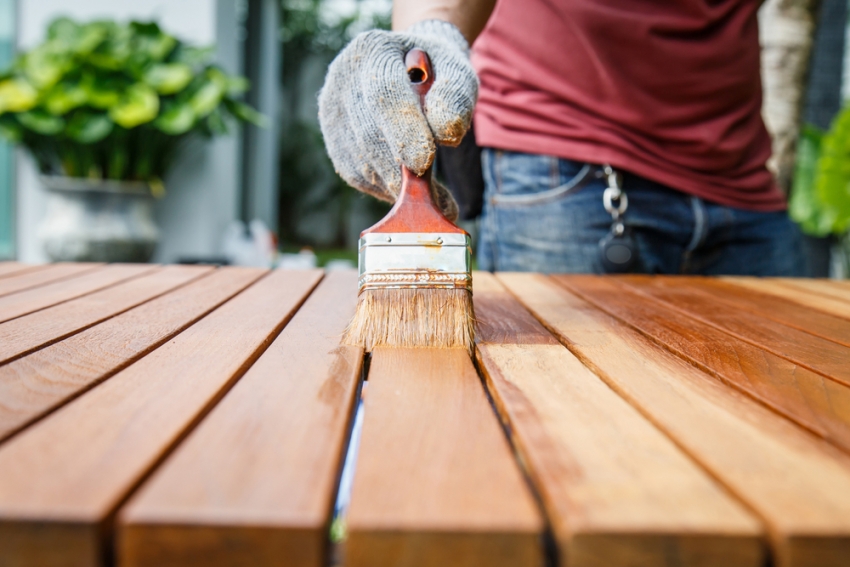
Different dyes have their own level of absorbency, but this often depends on the type of wood to be painted.
Recommendations for preliminary calculations:
- if multi-layer painting is assumed, then each subsequent application of paint will be accompanied by a lower consumption than the previous one;
- if you dilute the finished acrylic mixture with water in a 1: 1 ratio, this solution can be used as a preparatory primer, while creating a tint background (if the budget allows such costs);
- the required amount of dye is calculated taking into account the area for painting and consumption per 1 m²;
- it is recommended to add 5% to the result obtained as a safety margin.
Features of rubber wood paint for outdoor use
Rubber or latex paint is one of the modern wood finishes. The technical and operational characteristics of this material are in many ways superior to those of other paints and varnishes. The composition of rubber dyes contains components similar to acrylic mixtures - acrylates and water. However, the quality of latex coatings is much higher due to the innovative developments used in the production process.
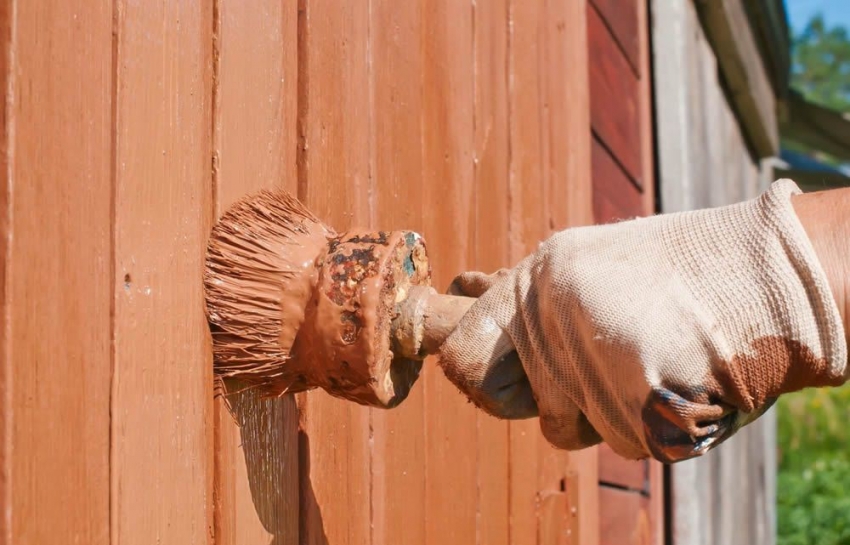
Rubber paint for wood has a high threshold of resistance to mechanical damage, so it is recommended to use it for agricultural buildings
Consider all the advantages of rubber compounds:
- environmental friendliness;
- safety for human health;
- there is no need to use personal protective equipment during staining;
- high strength characteristics;
- resistance to the influence of aggressive environmental factors (precipitation, UV, wind loads, pathogenic microorganisms, temperature changes);
- excellent protective properties;
- good vapor permeability;
- elasticity.
Note! Latex-painted surfaces can be washed with a solution containing an alkali.
After the composition dries, a velvety and durable film coating forms on the surface. The latex dye has a pleasant texture. The coating stretches well, so cracks are invisible on the surface. The price of rubber paint on wood for outdoor use is the only significant drawback. Therefore, the most popular on the market are acrylic compounds, which have a more affordable cost.
The main types of wear-resistant wood paints for outdoor use
MA-15 Descartes paint is a prominent representative of traditional oil-based formulations. In terms of wear resistance, it has average parameters. Provided that all application rules are followed, the maximum service life can reach 10 years. The advantages include the budget cost, among the disadvantages is the complex procedure for removing obsolete coating to update the finish.
Polyurethane paint Colored plastic from Glims PRO has a high wear resistance. It performs well at low temperatures, is resistant to ultraviolet light and negative atmospheric influences. This type of colorant is a universal formulation. The service life of polyurethane paint is over 10 years.
Deol alkyd enamel has a wide range of colors. It is resistant to atmospheric factors and repels moisture well from the surface. The prolonged presence of an unpleasant and pungent odor is the only negative.
Terraco acrylic paint fully meets the requirements of modern developers. The prices for the purchase of the composition are in the middle segment. In this case, the dye is suitable for universal use.
The price of paints for wood for outdoor use with high wear resistance:
| Name | price, rub. |
| Descartes | From 120 |
| Deol | From 250 |
| Glims | PRO From 400 |
| Terraco | From 700 |
Rating of paints on wood for outdoor work: descriptions, reviews, rates
Dyes intended for protective and decorative wood treatment are very popular among consumers and are presented on the market in a wide range. The offer includes different price categories and quality levels. The best brands are Finland (Tikkurila, Teknos), Canada (Forester) and Germany (Dufa). The products of Russian manufacturers cannot yet compete with foreign firms producing high-class dyes.
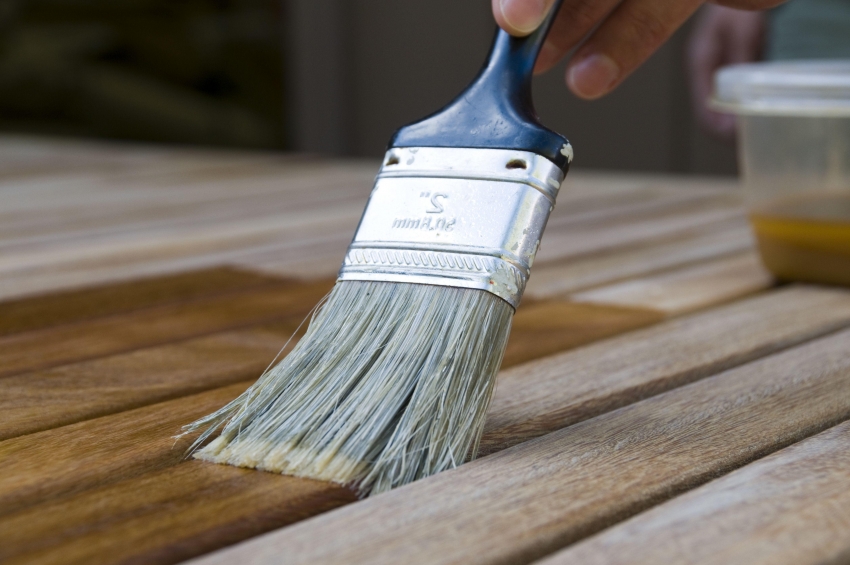
Protective and decorative wood processing is a guarantee of the durability of structures and buildings
Finnish wood paints for outdoor use Tikkurila
The Finnish company Tikkurila is the undisputed leader in the paints and varnishes market. The best brand colorants are alkyd-urethane and polyurethane-acrylate compounds.
Helpful advice! For additional protection of wood, you can use Tikkuril antiseptic agents. These compositions are endowed with fungicidal, insecticidal and biocidal properties that simultaneously protect from insects, and from fungus, and from microorganisms. At the same time, the antiseptic is completely safe for humans.
Water-based dyes specially designed for the harsh weather conditions of the Nordic countries. Therefore, the compositions perfectly withstand climatic loads, the effects of mechanical properties, the intense influence of the sun and precipitation. Subject to the observance of the three-stage coloring scheme, the coating can last more than 10 years. Such a system assumes a preliminary application of a primer and a two-layer treatment with a dye composition.
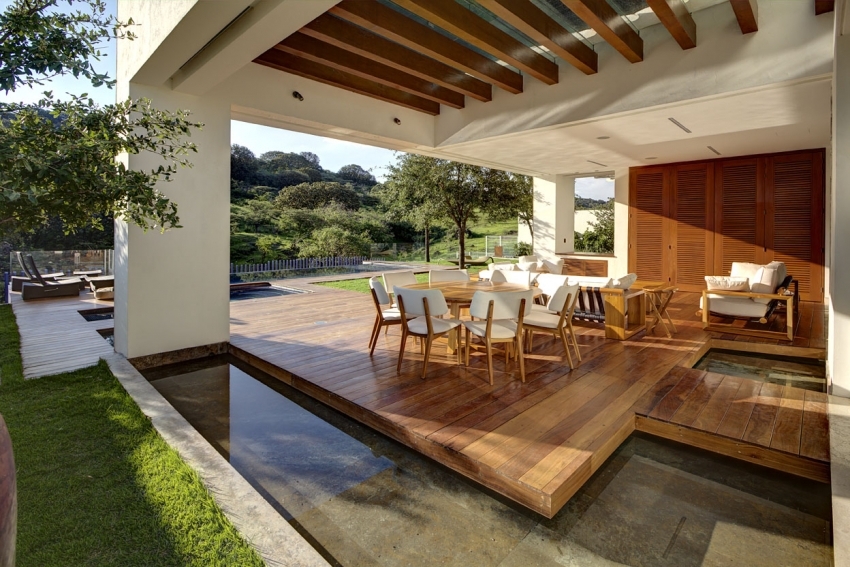
The Finnish manufacturer Tikkurila offers the buyer not only protective paints, but also primers, oils and impregnations for wood
Dye consumption depends on the texture of the treated surface. On even surfaces, 1 liter of the composition is enough for painting from 9 to 11 m². On rough surfaces, the same volume covers about 4-6 m² of area.
Popular Tikkurila wood paint series for outdoor decoration
According to the declared characteristics, the dyes of the Pica-Teho series are distinguished by their strength and elasticity. Provided that all the requirements of the application technology are met, this type of coating is able to provide the facade with effective protection for 6-7 years. For tinting the base, 120 shades are used. After application, no smudges remain on the surface. It takes about 2-4 hours to dry one layer of paint.
The advantages of the Ultra Classic dyes are persistence. The process of deformational changes that occur seasonally in wood does not in any way affect the external characteristics of the coating. The durable and elastic layer is able to withstand repeated stretching. Even as a result of tensile action, the coating retains all its initial properties.
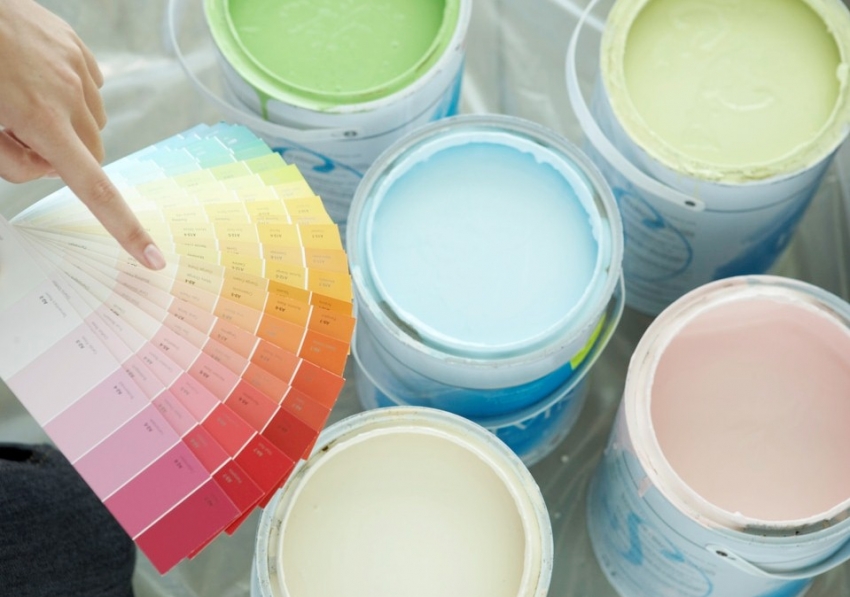
Tikkurila wood paints for outdoor use are considered one of the best materials, offering not only high quality but also a wide range of colors.
Thanks to the binder component in the Ultra Classic formulations, the semi-matt shine of the coating remains throughout the entire operational period. The finish can last more than 7 years. It takes only 1 hour to dry the mixture after application. The dye adheres well to surfaces that have already been stained before. Excellent compatibility with impregnated wood.
Compositions of the Tejo series dry much more slowly, it takes 24 hours. However, this cannot be called a disadvantage. Throughout this time, the coating forms a good adhesion to the treated surface and impregnates the upper layers of wood. During use, the finish becomes matte. The appearance of such an effect indicates that the coating is subject to gradual destruction. The effective life of the dye is 5-7 years.
Note! Under the condition of suitable temperatures, drying of the paint occurs within the period specified by the manufacturer. If the weather is damp outside, this process can be increased to 30-40 hours.
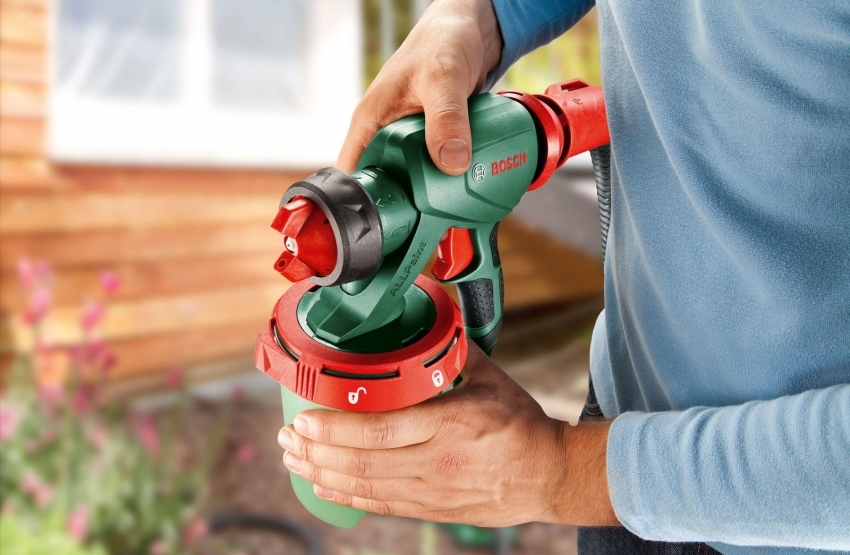
With proper skill, the dye can be applied in an even thin layer, without streaks and streaks, using a spray gun
Characteristics and prices of Tikkurila paints for outdoor woodwork, reviews
The optimal characteristics of the formulations have made them so popular with consumers. Tikkurila works well on any wooden surface. The most important characteristic is the hiding power, and in the case of this Finnish dye, this indicator fully meets the high requirements of the European standard system.
The main characteristics of Tikkurila dyes:
| Characteristic | Tejo | Ultra Classic | Pica Tejo |
| Recommended scope | oil dye of the traditional type for finishing the facades of buildings, frames and doors made of wood | coating for use in severe weather conditions with low temperatures and sharp drops in its indicator | composition for the protection and decoration of cladding boards, outdoor wood products, logs and fences |
| Consumption 1 l (first layer) | 15 | 9 | 9 |
| Consumption 1 l (second layer) | 11 | 7 | 6 |
| Composition | alkyd substances | polyacrylate base | water base, impregnating oil and acrylates |
| price, rub. for 1 liter | 965 | 925 | 810 |
The reviews left on the forums about these paints for outdoor woodwork reflect both the advantages and disadvantages of Tikkuril's compositions:
“The dye is not economical. Despite the application rates established by the manufacturer, the painting is accompanied by a large layer formation. Therefore, when applying paint, the utmost care had to be taken all the time. If this is not done, smudges appear.After about 4 years, a small network of cracks appeared on the coating. "
Evgeny Sinitsin, Moscow
“Tikkurila is a great paint. Excellent colors and excellent results. The coating fully pays for all costs and looks spectacular on the facade of the house. "
Sergei Mikulin, St. Petersburg
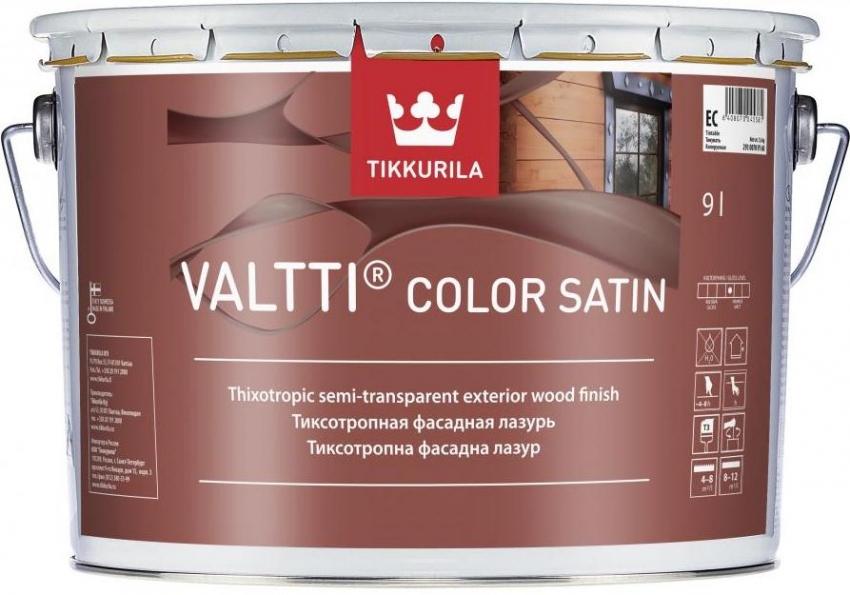
In order to preserve the texture and color of the wood, it is worth using a thixotropic glaze, which lays down in a thin transparent layer, reliably protecting the material from external factors
Popular series of paints Belinka for wood for outdoor use
Belinka dyes of Slovenian production take into account the need to protect wood from the negative effects of insects, fungi and mold. The coating can last for 10-15 years. Colorants are successfully used to give surfaces a variety of shades. In addition, they enhance the natural grain of the wood. Popular series of dyes are Toplasur, Tophybrid, Toplasur UV Plus.
Toplasur series is used for protective finishing of the following elements:
- polished logs;
- facades of wooden buildings;
- door structures;
- window frames.
The composition does not contain biocidal substances. Over a long period of time, the coating retains its attractive appearance and is subject to cracking.

Due to the long period of operation, the dyes of the Belinka trademark have won a special place among the owners of wooden cottages
Helpful advice! It is better to use a brush to paint the wood. This tool provides a better application of the composition and impregnation of the material. Experts advise choosing brushes that provide a large fence of paint. The optimum width is 7.5-12 cm.
Tophybrid formulations are classified as universal colorants. They blend perfectly with all types of wood surfaces. Toplasur UV Plus series is suitable for finishing door and window constructions that are used in conditions of intense influence of atmospheric factors.
Belinka compositions: characteristics and prices of wood paints for outdoor use, reviews
Basic characteristics of Belinka dyes:
| Characteristic | Tophybrid | Toplasur | Toplasur UV Plus |
| Recommended scope | enhanced protective wood treatment and painting in common shades | protective treatment of the facade of the building, wooden doors and frames | protective treatment of wood from UV rays, strengthening of the natural structure thanks to a colorless polymer coating |
| Consumption 1 l (first layer) | 25 | 20 | 20 |
| Consumption 1 l (second layer) | 15 | 10 | 10 |
| Composition | alkyd-based emulsion with water-repellent components and elements that are resistant to UV and weathering | dye based on high-quality alkyd resin and pigments, the composition includes protective components, hard waxes and organic solvents | colorant based on alkyd resins, UV-protective pigments, absorbents, organic solvents and hard waxes |
| price, rub. for 1 liter | 905 | 615 | 915 |
Consumer reviews about Belinka paint:
“I am quite satisfied with the coverage, but there are also disadvantages. When the first coat is applied, the wood absorbs a large amount of paint. The tree-ring structure is very visible. But in places where mastic comes across, the paint is not able to penetrate into the depth of the material. As a result, noticeable specks remain on the surface. "
Arthur Goshin, St. Petersburg
“I recently bought Belinka paint for wood to protect the facade. The quality is excellent. True, in practice, it turned out that one should not interrupt when applying one layer. Otherwise, the places at the joints will be noticeable. This result is obtained even if 2-3 hours have not passed since the application. But the staining procedure itself is very simple. It is enough just to work out the surface with a hard brush. "
Andrey Shvets, Yekaterinburg

The Toplasur UV Plus series of dyes from the Belinka company has a high level of protection of wood from moisture, so such a coating is not afraid of rain and cleaning
Popular series of paints Neomid for wood for outdoor use
The products of the Neomid company are known on the market due to an effective line of products aimed at preparing wooden surfaces. Whitening compounds are in high demand, both among home owners and large developers. For the processing of wooden products, materials of the following types are used:
- facade paint Neomid;
- Bio Color Aqua;
- Bio Color Ultra.
Neomid dye for wooden facades forms a coating on the surface with dirt-repellent properties and moisture resistance. This finish is able to withstand multiple temperature changes. This type of dye is recommended for primary surface painting or renewal of an existing paint layer.
Helpful advice! A high-quality staining result is possible only with careful preparation. It is recommended to clean the surface of dirt and dust deposits, as well as remove the old paintwork. If the wood is affected by blue, it is better to apply a bleach, for example, Neomid 500.
Compositions of the Bio Color Aqua series do not have unpleasant odors. In addition to the list of standard characteristics for outdoor dyes, the mixture includes a micro wax. Since the formulations do not have the necessary covering power, the manufacturer added a double dose of components that protect the coating from ultraviolet radiation. Before painting with acrylic paints on wood, the mixture is tinted.
Bio Color Ultra dyes are based on bactericidal components that prevent the development of fungi and mold. According to the manufacturer's information, the coating repels insects. The composition is suitable for decoration and protection of various wooden surfaces used in adverse climatic conditions.
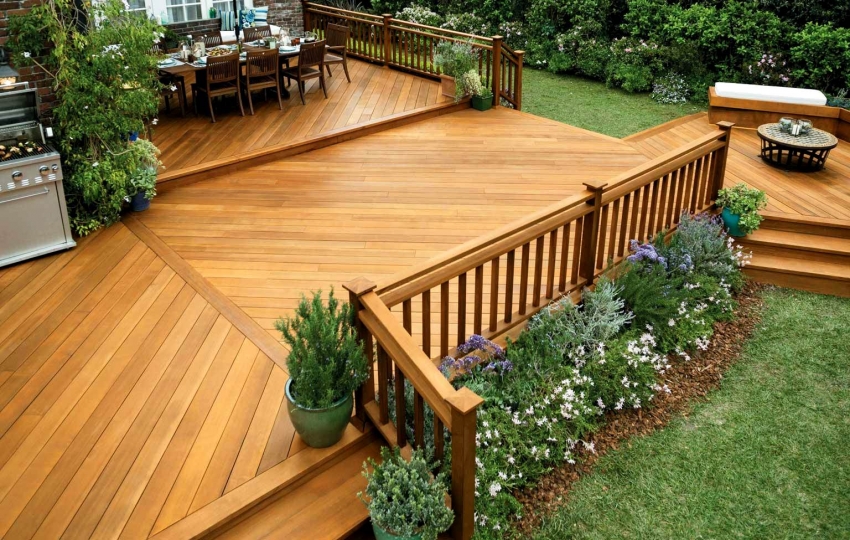
Due to the presence in the composition of the dye Bio Color Aqua micro wax, the painted surface has a beautiful shine and color
Characteristics and prices of Neomid coatings, reviews
The main characteristics of Neomid dyes:
| Characteristic | Bio Color Ultra | Facade | Bio Color Aqua |
| Recommended scope | protection and decoration of wooden products, a thick indelible layer is formed on the surface, which is not afraid of precipitation and direct rays of the sun | treatment of facades against mold and mildew, a thin film coating is formed on the surface with high adhesive properties, good permeability and resistance to multiple deformation changes | decorative coating of a glazing type, characterized by environmental friendliness, forms an elastic and durable coating in the form of a film, which partially penetrates deep into the wood, does not wash out with water and resists ultraviolet light |
| Consumption 1 l (first layer) | 12 | 10 | 12 |
| Consumption 1 l (second layer) | 9 | 8 | 7 |
| Composition | mixture based on alkyd resins, active agents and pigments | composition based on acrylic copolymers, active elements | dye based on acrylic copolymers, pigments and active substances |
| price, rub. for 1 liter | 240 | 300 | 210 |
Customer reviews about Neomid products:
“I tried Neomid paint. I don't see anything bad, but I don't see anything good either. Compared to other options, it can be said to be a solid middle ground. After painting the wood with acrylic paint, it turned out that it was designed for mild climatic conditions. At -40 ° C, the coating showed itself poorly when the facade thawed out on the surface, a significant deposit with a crystalline structure remained. The protective film has burst in some places. "
Stanislav Fedkovich, Norilsk
“Good paint, economical. Used for painting barn... On the old layer of paint did not lay down very evenly, but it does not matter. "
Maria Hom, Odintsovo
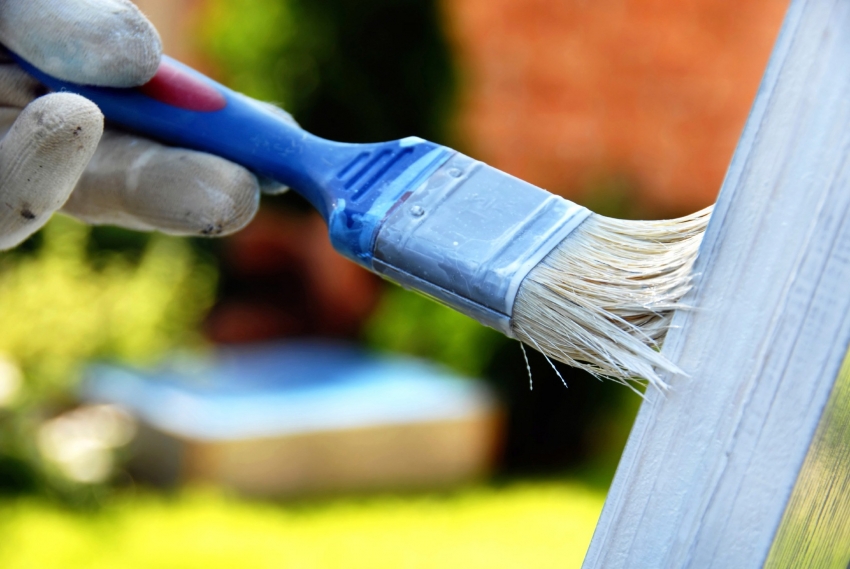
Dyes from the Neomid company are environmentally friendly, so they can be used to cover children's playgrounds and swings
Description of compositions from the Teknos wood paints catalog
This category of colorants is characterized by high cost. At the same time, the costs of purchasing the formulations are quite justified, because they are covered by a long service life - 30 years. Developers use these products to decorate prestigious timber buildings.
Teknos wood paints are available in the following series of finishing materials:
- Vudex Eco;
- Vudex Classic;
- Haiti.
The Vudex Eco line has an oil base and is presented in the form of a glazing antiseptic. The application of the composition does without smudges and splashes. A thin, uniform coating with a high margin of safety is formed on the surface.
Helpful advice! If a color is added to Vudex Eco dye, the coating will protect the wood from the effects of ultraviolet radiation.
The composition is suitable for renewing a decorative layer in the form of a glaze antiseptic or a primary application to a wooden surface:
- logs;
- glued laminated timber;
- planking boards;
- profiled timber.
For vertical and horizontal surfaces, Vudex Classic is ideal for a drip-free finish. Even a person without experience can handle the application. The coating is velvety and pleasant to the touch.
Vudex Classic is used for finishing:
- exterior walls of the building
- window structures;
- fences;
- terraces;
- berths.
Haiti's line of dyes belongs to the budget category. At the same time, European quality standards have been preserved. Average service life is 5-7 years. The compositions are used for decorating and protecting buildings made of wood, structures made of logs and boards and other objects used in the open air.
Note! The Vudex Classic series coatings are used exclusively for initial application. Compositions cannot be applied to previously painted surfaces.
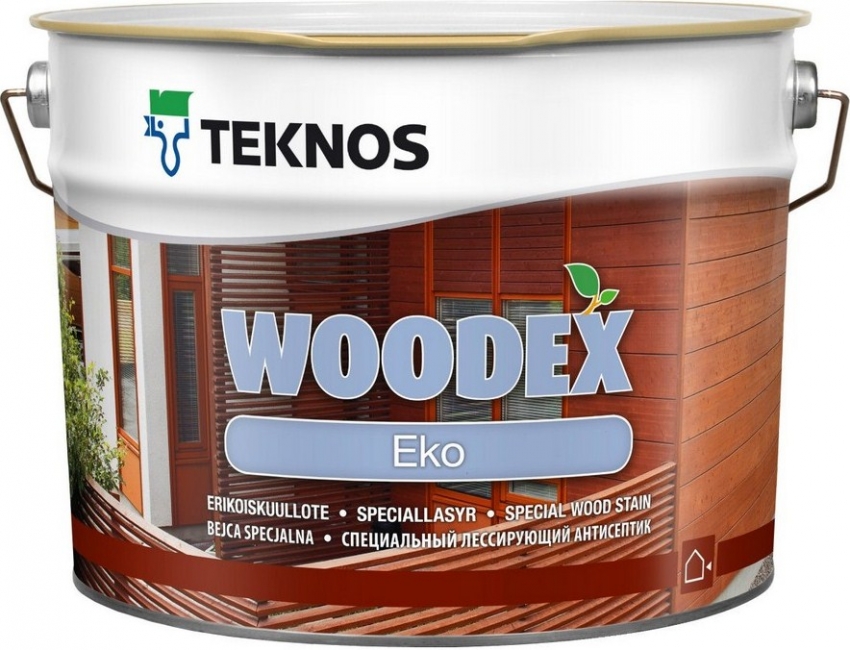
Vudex Eco, a water-borne oil-based glaze preservative, can be applied to wood using a brush, roller or spray gun.
Characteristics and prices of paints for Teknos wood, reviews
The main characteristics of Teknos dyes:
| Characteristic | Vudex Classic | Haiti | Vudex Eco |
| Recommended scope | an antiseptic tinting agent with a jelly-like structure for easy application, allowing limited to one layer of coating, well impregnates the upper layers of the material and provides protection against atmospheric factors | protection of wood from biological and atmospheric factors of destruction on the basis of high-quality alkyd resins, shows resistance to fungi, algae, mold, high moisture levels and sharp temperature changes in the range from +50 to -50 ° С | antiseptic agent of a glazing type, which preserves the natural wood pattern and protects the surface from deformation loads with a thin coating, for this it is enough to apply in two layers |
| Consumption 1 l (first layer) | 12 | 10 | 12 |
| Consumption 1 l (second layer) | 8 | 8 | 8 |
| Composition | mixture based on organic solvents, pigments and active substances | dye, including alkyd resins, organic solvents, antiseptic, color | composition with a large amount of oils, no organic solvents |
| price, rub. for 1 liter | 635 | 440 | 635 |
Consumer feedback on Teknos dyes:
“I used Teknos Vudex Classic paint for finishing the balcony cladding. The mixture fits well, does not undergo fast fading under the influence of bright sun.For a long time I could not find a suitable finish, since the balcony is located on the south side and all the dyes lost their color after a year. Until I settled on Teknos, which has been looking great for 7 years. "
Anton Ivashin, Moscow
Popular series of Zobel wood stains for outdoor use
For 17 years, Russian consumers have been able to buy Zobel wood paint from a German manufacturer. The high quality of these coatings is confirmed by the compliance with all standards. The products are universal, the assortment includes compositions suitable for use in various climatic zones. For a convenient selection of shades, the manufacturer offers a large number of colors.
The following types of compositions are considered popular dyes:
- Deco-tec 5400;
- Deco-tec 5450;
- Protec 450.
Deco-tec 5400 is a topcoat. In addition, the paint acts as a primer, which can significantly reduce costs.
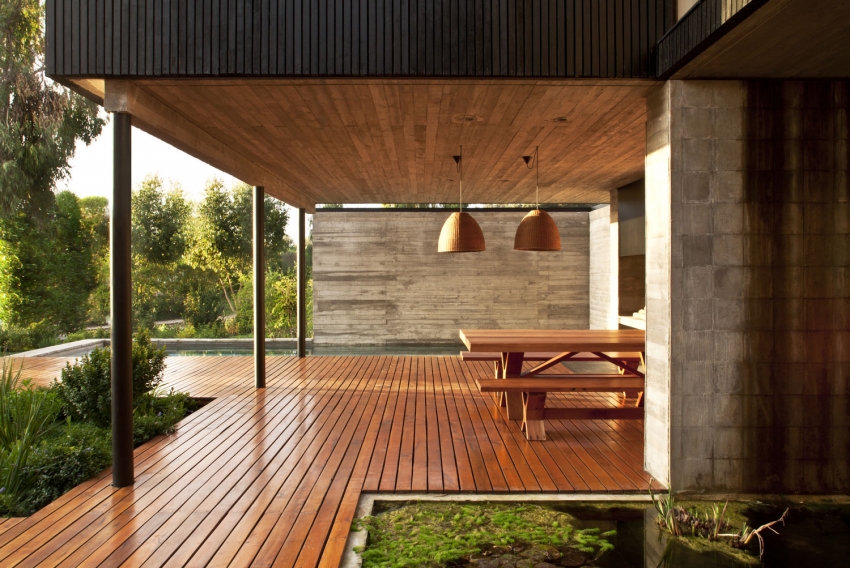
Zobel Deco-tec 5400 dye contains primers, so this composition is ideal for coating wooden terraces
Note! The dye does not contain antiseptic agents, therefore it is recommended to treat the material with a protective compound before applying it.
Before painting the wood is carefully sanded. After the first coat is applied, you need to wait until it is dry, and then work with a sponge or fine-grained sandpaper, removing the lint. This procedure will prevent capillary movement of liquid into the wood through the pile.
Deco-tec 5450 is a water-based dye. According to the manufacturer's information, this type of coating eliminates the possibility of flaking on the surface. When exposed to deformation loads, the thin film coating retains its integrity. Since the surface is not prone to peeling, the renewal of the paint and varnish layer is carried out by reapplying the composition, without resorting to removing the old one.
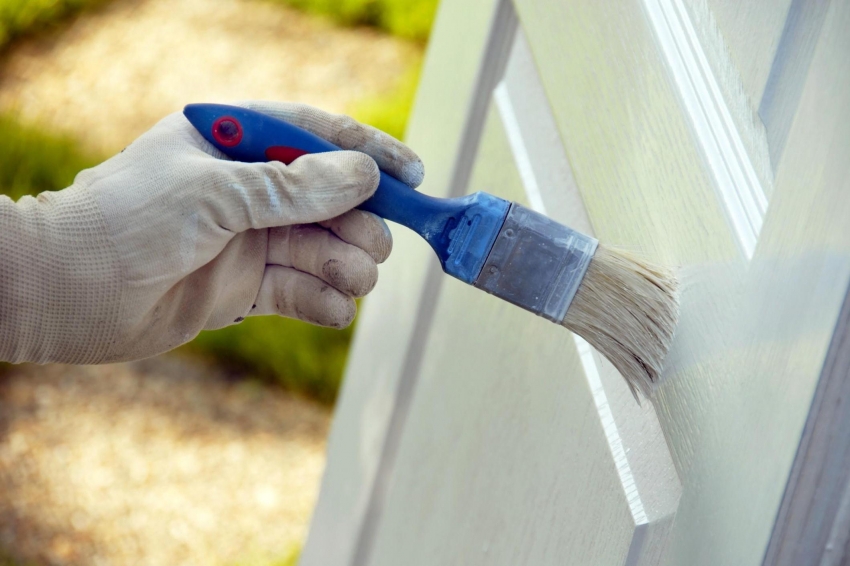
Zobel Deco-tec 5450 is resistant to mechanical damage, so it can be used to cover doors, gates and jambs
When working with Protec 450 it is important to maintain the optimum viscosity level. The use of sprayers is not recommended. Better to give preference to a brush. To prepare the surface, use 100-120 grit sandpaper.
Characteristics and pricing of popular Zobel formulations
The main characteristics of Zobel dyes:
| Characteristic | Deco-tec 5450 | Deco-tec 5400 | Protec 450 |
| Recommended scope | processing of wooden surfaces with the formation of an opaque weather-resistant coating, the dye is water-repellent, penetrates deeply into the material and forms a thin film that is not endowed with wear resistance, therefore, intense exposure to wind and dust can damage the finish | varnish with a covering ability to protect facades, thanks to the blocking properties of drops, the application technology is greatly simplified, and the coating adheres well to the surface and shows resistance to fading under the influence of the sun | white intermediate dye, used as a topcoat and diluted with water, exhibits high resistance to atmospheric factors, the presence of a special pigment (titanium dioxide) in the composition ensures the preservation of whiteness for about 6-7 years, the product is inherent thixotropy |
| Consumption 1 l (first layer) | 10 | 10 | 10 |
| Consumption 1 l (second layer) | 8 | 8 | 5 |
| Composition | emulsion of alkyd-acrylate type and a set of standard and micronized pigments | emulsion of alkyd-acrylate type and a set of standard and micronized pigments | acrylate-based dye |
| price, rub. for 1 liter | 1170 | 900 | 1440 |
Features of Pinotex wood paints for outdoor use
Pinotex produces dyes for various purposes. The assortment even includes several types of compositions for processing door and window structures.
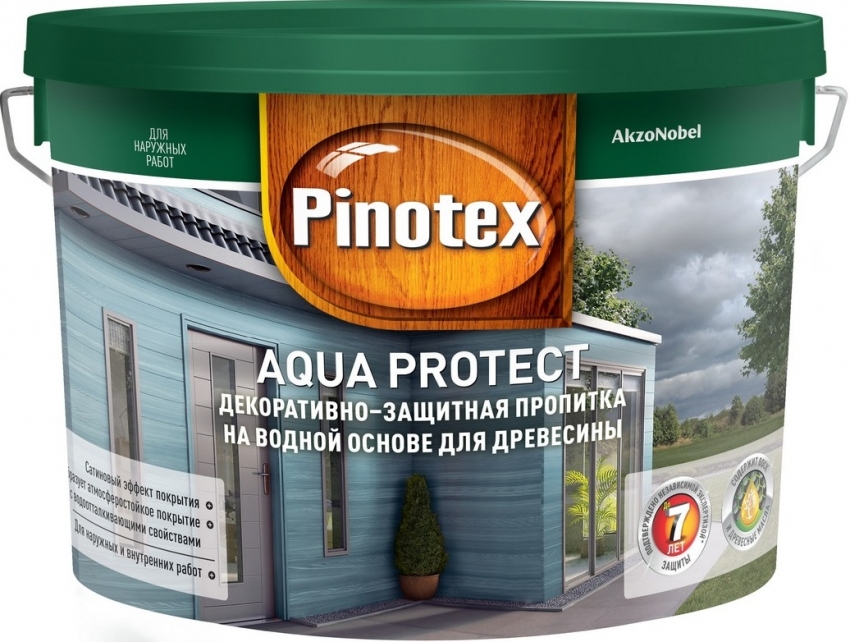
A high-quality and durable staining result can be obtained by applying 2-3 layers of Pinotex AQUA PROTECT protective impregnation for wood.
Pinotex Doors & Windows paint has a water-borne base and contains active agents aimed at fighting blue and mold. A high-quality result is obtained by applying 2-3 layers with a brush. It takes 4 hours to dry the composition between layers, complete drying - 12 hours. One liter of dye is enough to process 11 m² of sawn wood and 13 m² of planed material.
Helpful advice! To provide reliable protection against UV radiation and precipitation, this type of paint is recommended to be used in combination with Pinotex Wood Primer.
Pinotex Lacker Aqua is a tinted, water-borne varnish. The paint forms a smooth coating on the surface with elastic, dirt and water repellent properties. The product emphasizes the beauty of the natural wood texture, is evenly distributed and ensures the resistance of the material to abrasion, scratches and other mechanical damage, as well as the influence of detergents.
Pinotex compositions for outdoor woodwork: prices for decorative finishes:
| Name | price, rub. |
| Pinotex Lacker Aqua | 750 |
| Pinotex Doors & Windows | 779 |
Characteristics of wood paints for outdoor use Drevoplast
The company Drevoplast supplies the market with antiseptic wood preservatives. These impregnations are suitable for both planed and sawn surfaces, indoors and outdoors.
Composition Biodrev is a water-based antiseptic coating type. The composition includes natural oils. The product is environmentally friendly, has no unpleasant odor and is safe for humans. Biowood provides protection against external factors, including biological threats. The coating preserves the structural features of the material and prevents the wood from drying out.
Drevoteks composition is used as a tinting impregnation for wood with antiseptic properties.
The product is water-based and includes the following additives:
- acrylate dispersions that provide biological protection;
- resins of synthetic origin;
- dyes.
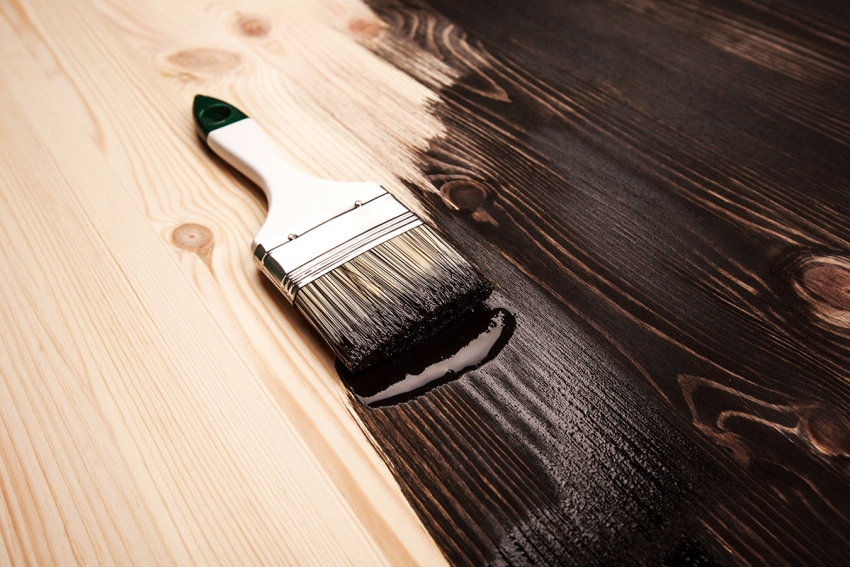
Drevoplast impregnation is used for tinting and wood protection and is an environmentally friendly product
The product is odorless and does not contain solvents that can be toxic to humans.
Average prices for Drevoplast compounds:
| Name | price, rub. |
| Bodrev | 307 |
| Wood soil-Aqua | 265 |
| Drevotex | 230 |
| Pinturol | 295 |
Overview of Dufa paints for outdoor woodwork
The German manufacturer Dufa produces high quality paints and varnishes. The range of the manufacturer is diverse and includes colored varnishes, alkyd and acrylic compounds, coatings with a high margin of wear resistance and other useful products for indoor and outdoor use.
The dyes of the Premium Woodflex series belong to the category of universal coatings. They not only protect the material from damage, but are also able to repel dirt and water.
Note!Dyes Premium Vudex can be used not only for wood processing. The material is suitable for finishing slate, galvanized metal, bricks, etc.

Dye Premium Woodflex brand Drevoplast has a high level of hydrophobic properties, so it is recommended to use it for outdoor terraces
Premium Vudex has many benefits:
- weather resistance;
- elasticity;
- good adhesive properties;
- resistance to aggressive influence of industrial emissions.
On the surface, the dye forms a glossy surface with a silky effect.Due to its high elasticity, the coating responds well to deformation changes in wood.
Prices for Dufa products:
| Name | price, rub. |
| Siedenmattlack | 470 |
| Fensterlack | 550 |
| Fassadenfarbe 90 | 1300 |
| Premium Woodflex | 2043 |
Choosing a paint color for wood: colors and recommendations
Choosing the right color is extremely important as the hue not only provides the exterior design, but also influences the surroundings.
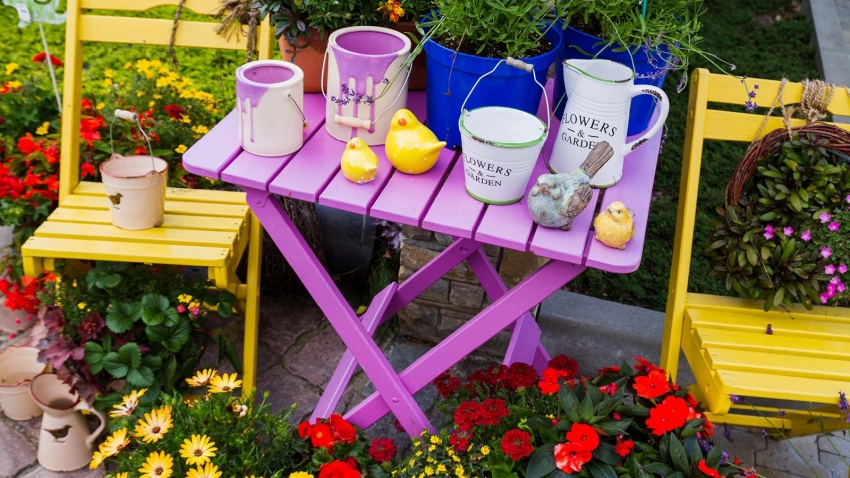
You can use bright, saturated colors to cover garden furniture. paints for wood, which will allow not only to decorate the site, but also to protect objects from external factors of influence
With the help of color, you can influence the perception of an object as a whole:
- hide or vice versa, emphasize all the flaws of the building;
- effectively highlight interesting architectural elements;
- visually change the shape of the structure;
- influence the degree of sun exposure by increasing or decreasing it.
Light colors as well as a gray tint are highly resistant to ultraviolet light. Unlike white surfaces, walls in gray do not yellow. At the same time, the external novelty of the coating is preserved, since dust is not visible on it. With the help of light shades, you can visually increase the size of the object, so they are recommended to be used in cases where the architectural design provides for scale and grandeur.
Choosing the best shades for wood-like paints
Often, consumers resort to using wood staining. With this method, a pronounced woody structure can be formed on the surface. Moreover, such dyes can be used on other surfaces to create an imitation:
- metal;
- chipboard;
- MDF;
- plastic.

Using a special mold to add texture to the paint, you can get a beautiful finish with a natural board pattern
The basis for painting is selected in accordance with the surface material. To create the desired effect, it is necessary to carefully select the shades of paints for wood-like doors. This will require a light color scheme and a contrasting dark one. The light range can be represented by sand, light yellow or beige. For dark contrast, burgundy, deep brown and black are suitable.
The choice of color combination depends on the type of wood selected for the imitation. Fortunately, modern paints and varnishes allow you to choose not only a high-quality coating, but also the necessary color. Having settled on a dye of a certain brand, you need to take into account that all related products or shades to create a wood effect must belong to the same manufacturer. Only in this case the coating can last a long time.

